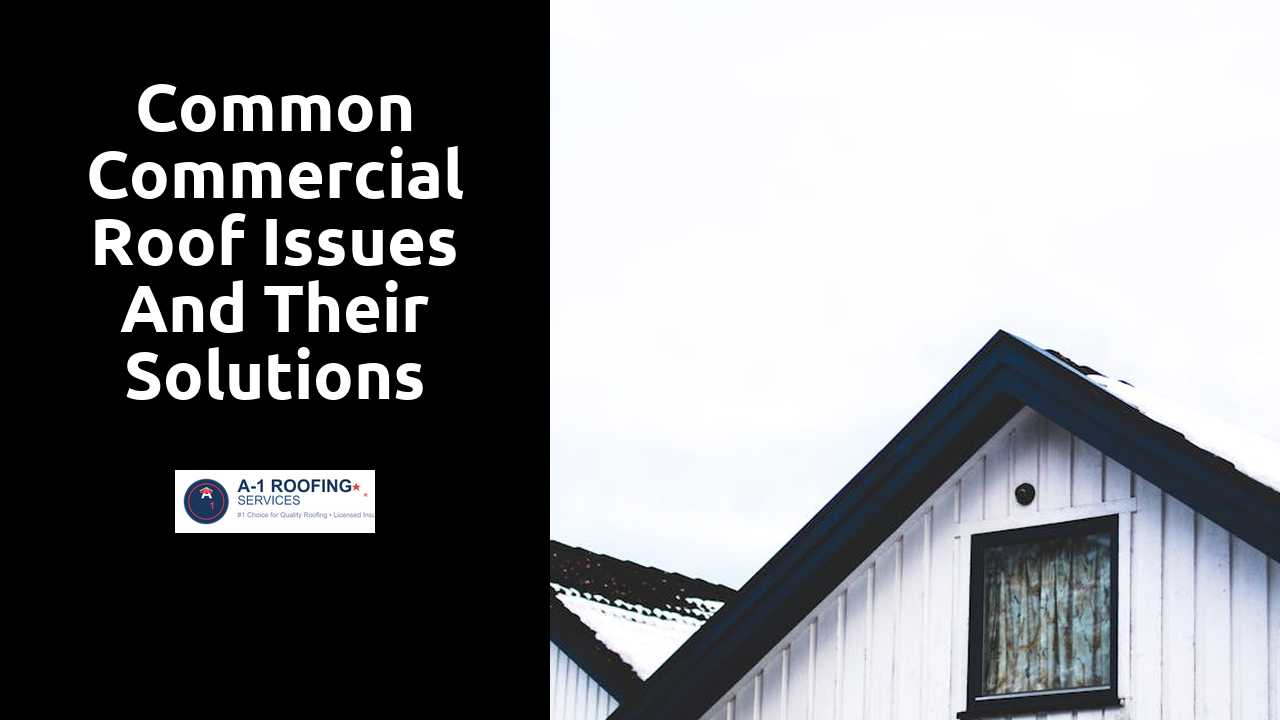
Common Commercial Roof Issues and Their Solutions
Table Of Contents
Blistering and Bubbling
Blistering and bubbling on commercial roofs are common problems that can compromise the overall integrity of the roofing system. This issue typically arises due to poor ventilation, leading to trapped moisture that forms blisters in the roofing material. Over time, these blisters can expand, causing further damage and eventually leading to leaks if not addressed promptly. Recognizing these signs early is crucial in preventing more significant issues and costly repairs.
Addressing blistering and bubbling involves several strategies. One effective solution is to improve ventilation to reduce moisture accumulation. Additionally, proper installation techniques can minimize the risk of such deformities occurring in the first place. In cases where blisters have already formed, some roofing professionals may recommend carefully repairing or replacing the affected areas to ensure the roof remains watertight and functional. Regular inspections and maintenance play a vital role in identifying potential problems before they escalate.
Hop over here to discover more.
Causes and Prevention Measures
Blistering and bubbling on commercial roofs often stem from poor ventilation, trapped moisture, and the accumulation of heat. These issues can arise when the roofing materials are improperly installed or when aging materials begin to lose their integrity. Inadequate drainage can exacerbate the problem, leading to water pooling and further deterioration of the roof surface. This not only affects the appearance but also compromises the roof's structural integrity over time.
To prevent blistering and bubbling, regular inspections and maintenance are essential. Implementing proper ventilation systems can help reduce moisture buildup and allow for better air circulation. Ensuring that all seams, flashings, and roof penetrations are correctly sealed and in good condition can also play a significant role in preventing these issues. Using high-quality roofing materials that are appropriate for the specific climate and regional conditions can further mitigate the risk of blistering and bubbling.
Insufficient Insulation
Proper insulation plays a crucial role in maintaining a building's energy efficiency and comfort level. Insufficient insulation can lead to significant heat loss in the winter and excessive heat gain in the summer. This imbalance not only affects the internal climate but also forces heating and cooling systems to work harder, resulting in increased energy costs. Buildings with inadequate insulation may experience uneven temperature distribution, leading to discomfort for occupants and potential long-term damage to the structure.
Investing in the right insulation materials and techniques can yield substantial benefits. Proper insulation reduces energy consumption, which translates into lower utility bills. It also enhances the lifespan of the roofing system and the overall building, as it helps to prevent issues such as condensation build-up and moisture damage. By addressing insulation concerns early, property owners can enhance occupant comfort and protect their investment.
Benefits of Proper Insulation
Proper insulation plays a crucial role in maintaining a stable indoor environment and reducing energy costs. It ensures that heat remains inside during colder months while keeping it out during warmer seasons. This creates a comfortable atmosphere for occupants, ultimately leading to increased productivity and satisfaction. Additionally, well-insulated roofs contribute to a building's overall energy efficiency, which can result in lower utility bills and a reduced carbon footprint.
Another significant benefit of proper insulation is its ability to extend the lifespan of roofing materials. By regulating temperature fluctuations, insulation helps prevent the formation of ice dams and reduces stress on the roofing system. This not only minimizes the risk of leaks and water damage but also decreases the need for frequent repairs. Investing in high-quality insulation can ultimately save property owners both time and money in the long run.
Roof Penetrations
Roof penetrations occur when various elements such as vents, pipes, or HVAC units create openings in the roofing membrane. These penetrations can lead to significant vulnerabilities if not properly addressed. Often, water can infiltrate these openings, leading to leaks and other forms of damage. Maintaining the integrity of these points is critical for preserving the overall health of the roof and preventing moisture-related issues within the building.
Proper sealing and flashing techniques are essential in managing roof penetrations effectively. Flashing acts as a barrier against water intrusion, directing moisture away from potential weak spots. Installing high-quality sealants around penetrations helps ensure a watertight seal. Regular inspections and maintenance should also be implemented to identify wear and tear, allowing for timely repairs that can extend the life of the roof and enhance its performance.
Sealing and Flashing Techniques
Proper sealing and flashing techniques are crucial for protecting commercial roofs from water intrusion. Sealing involves applying a waterproof membrane or sealant to joints, seams, or any areas that may be susceptible to leaks. Flashing, on the other hand, refers to the installation of strips of metal or other materials that direct water away from critical points, such as valleys, chimneys, or roof penetrations. Regular inspections and maintenance help identify areas where these elements may be wearing down or deteriorating, thus preventing more extensive damage and costly repairs.
When implementing sealing and flashing, it is essential to choose high-quality materials that can withstand harsh weather conditions. Employing experienced roofing professionals for the installation ensures that these techniques are applied accurately and effectively. Additionally, using compatible sealants with existing roofing membranes will enhance their durability and performance. This proactive approach not only extends the lifespan of the roof but also helps maintain energy efficiency through proper water management.
Related Links
Seasonal Strategies for Maintaining Commercial Roofing SystemsImportance of Regular Maintenance for Commercial Roofs